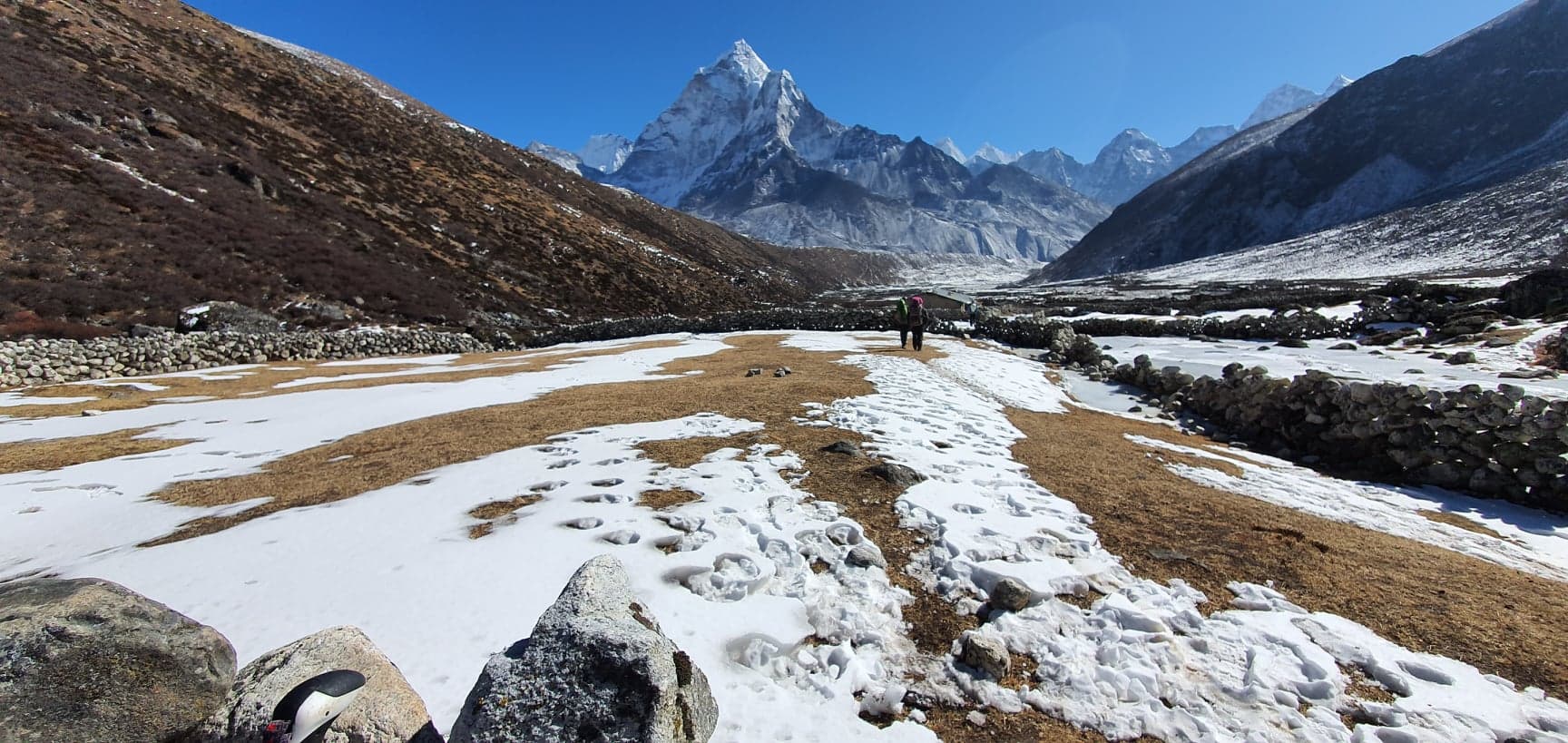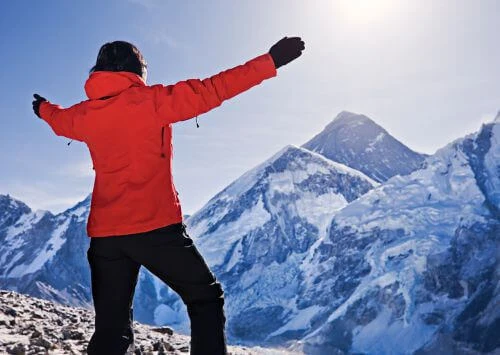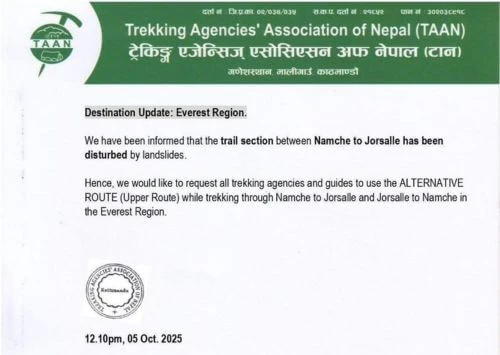Overview of the Difficulty Levels on the Trail
The Everest Base Camp Trekking Trail is renowned for its difficulty, attracting adventurers worldwide who seek to test their limits. The trail is divided into various sections, each presenting its unique challenges. From the treacherous Khumbu Icefall to the rocky terrain of the Kongma La Pass, trekkers must be prepared to face many obstacles.
Challenges faced during the ascent.
Ascending the Everest Base Camp is a grueling endeavor that requires physical endurance and mental resilience. As trekkers make their way up, the altitude increases, making each step more challenging than the last. The steep inclines demand great strength and stamina, and trekkers must be prepared for the physical strain that comes with it.
Navigating the Khumbu Icefall
One of the most treacherous sections of the trail is the Khumbu Icefall. This constantly shifting terrain is filled with massive ice formations, making it a dangerous passage for trekkers. The Khumbu Icefall presents technical challenges that require careful navigation and specialized equipment. Trekkers must be prepared for the unexpected and exercise caution as they enter this hazardous section.
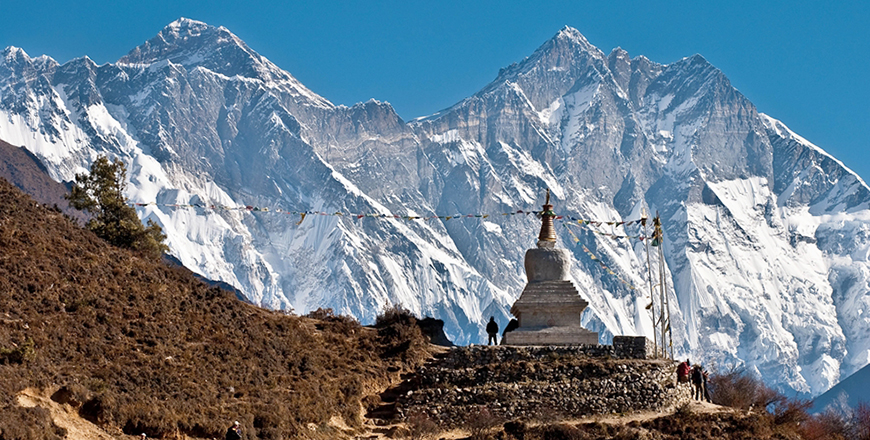
Tackling the steep inclines of the Trail.
The Everest Base Camp Trekking Trail is notorious for its steep inclines, which test the endurance and strength of even the most experienced trekkers. As trekkers ascend, the altitude increases, making each step more difficult than the last. The steep inclines require trekkers to have strong leg muscles and a high level of cardiovascular fitness. Preparing physically before embarking on this journey is crucial, including regular cardio and strength training exercises.
Dealing with Altitude Sickness.
Altitude sickness is a formidable foe on the Everest Base Camp Trek. As trekkers ascend to higher altitudes, the air becomes thinner, making it harder for the body to acclimatize. Altitude sickness can have severe consequences, including nausea, dizziness, and, in extreme cases, pulmonary edema or cerebral edema. Trekkers must take precautions to prevent altitude sickness, such as gradual acclimatization, proper hydration, and early recognition of symptoms.
Crossing the Challenging Cho La Pass.
Located at an altitude of 5,420 meters, the Cho La Pass is one of the most challenging sections of the Everest Base Camp trekking trail. This high mountain pass is known for its steep slopes and icy conditions, making it a difficult crossing for trekkers. The ascent requires careful footwork and the use of trekking poles for stability. Trekkers must also be prepared for the extreme cold and strong winds that are common in this area.
Conquering the Rocky Terrain of the Kongma La Pass.
The Kongma La Pass is another formidable obstacle on the Everest Base Camp trekking trail. Its rocky terrain and challenging ascent characterize this high mountain pass. Trekkers must navigate through loose rocks and boulders, requiring careful foot placement and a steady pace. The Kongma La Pass offers stunning panoramic views, but trekkers must remain focused and alert to conquer this difficult section.
Surviving the Unpredictable Weather Conditions.
One of the biggest challenges trekkers face on the Everest Base Camp trekking trail is the unpredictable weather conditions. The region is known for its sudden weather changes, ranging from clear skies to heavy snowfall and strong winds. Trekkers must be prepared for all types of weather and have the necessary gear to stay warm and dry. Monitoring weather forecasts and planning the trek accordingly is essential to ensure a safe and successful journey.
Recommended Read:
Weather and Climate of Nepal
Navigating the Khumbu Icefall.
Embarking on the Everest Base Camp Trekking Trail is a true test of endurance and mental strength. The most difficult sections of the EBC Trek trail, such as the Khumbu Icefall, steep inclines, and high mountain passes, present unique challenges that require careful preparation and navigation. Trekkers must be physically fit, mentally prepared, and equipped with the necessary gear to conquer these obstacles. By taking the time to train, acclimatize, and plan accordingly, adventurers can make their journey to Everest Base Camp a successful and unforgettable experience.
As you prepare for your own expedition, remember to prioritize safety, listen to your body, and take it one step at a time. The Everest Base Camp Trekking Trail is an adventure like no other, and by conquering its most difficult sections, you'll gain a sense of accomplishment and a lifetime of memories.
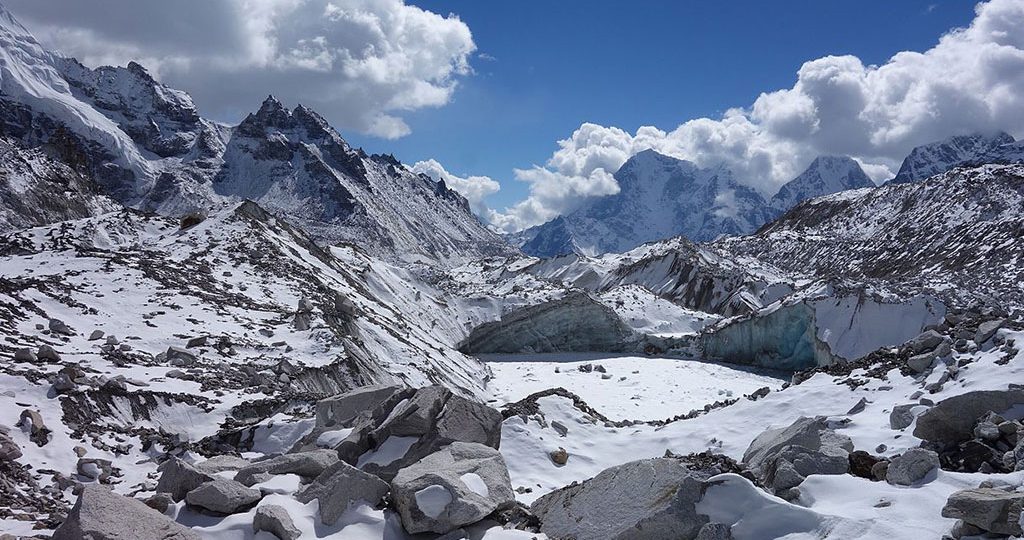
Safe Travels and happy Trekking!
jordanworldtraveler
New York City, NY3 contributions
Everest Three Passes Trek - Simply The Best!!!!!
Apr 2023 • Solo
Trekking Planner sets the bar so high! From beginning to end, the experience was gold standard. Excellent communication, seamless airport transfers, a very warm and inviting staff, and a clean and comfortable hotel… and that’s just in Kathmandu. The Everest Three Passes Trek was INCREDIBLE! Trekking Planner has professional and knowledgeable guides who make the trip fun, and they organize great tea houses with comfortable beds and delicious food. The only thing this company can’t do… is provide perfect weather. :) But even with a few snowy days with no visibility, the trek was still incredible and will be remembered for the rest of my life. If you have the time to dedicate to the Three Passes Trek, go for that over the traditional EBC route. Absolutely fantastic experience! 6 stars for Dipak and his team if I could.
Tadej G
3 contributions
EBC, three high passes, Island peak + Pokhara & Chitwan
Apr 2023 • Solo
It was my first time in Nepal and i will probably come back for some more trekking and climbing. I really enyojed it from my first day to my last day. Everything was very well planned, the weather, views were amazing. The team always take care of me. My guide was Sonam, we made good team, all time i was safe and in good hands. He listened to my wishes and try to fulfil them.
After hard trekking and climbing is good to relax in Pokhara and Chitwan.
Thank you team & see you soon!
Dominik#
3 contributions
High Pass Trek
Apr 2023 • Solo
Milan is a very good guide, can give me answers on all of my questions, is very kind and helpful. Gives me many information about the trip and knows a lot about this area. Everything is perfect organized by Trekking Planner.
Tackling the Steep Inclines of the Trail
The Khumbu Icefall is an infamous section of the Everest Base Camp Trekking Trail that poses immense challenges to trekkers. This treacherous section lies between the base camp and Camp 1, and it is notorious for its constantly shifting massive ice formations. Navigating this icy maze requires technical expertise and a keen understanding of the ever-changing terrain.
Trekking through the Khumbu Icefall demands careful attention to detail and the ability to adapt to unexpected obstacles. Ice towers, crevasses, and seracs create an intimidating landscape that demands constant vigilantism. Experienced Sherpas lead the way, meticulously identifying safe paths and fixing ropes to assist trekkers in crossing treacherous sections. Even with Sherpa's guidance, this section requires trekkers to be physically fit and mentally prepared for the challenges that lie ahead.
The Khumbu Icefall is not a place for complacency. Each step must be taken cautiously, and trekkers must be prepared for the unexpected. The combination of physical stamina, mental strength, and technical skill is essential to navigate this section successfully. While it may be one of the most difficult parts of the Everest Base Camp Trekking Trail, conquering the Khumbu Icefall is a rewarding achievement that sets the stage for the rest of the journey.
Dealing with Altitude Sickness.
While the Everest Base Camp Trekking Trail offers stunning landscapes, it is not without its arduous ascents. The steep inclines that trekkers encounter along the route test both physical endurance and mental determination. These sections demand relentless perseverance as trekkers push their limits to conquer the heights.
One such challenging incline is the ascent to the summit of Kala Patthar. Situated at an elevation of 5,545 meters, Kala Patthar provides a breathtaking panoramic view of Mount Everest. However, the path to this vantage point is steep and unforgiving. Altitude Sickness becomes a formidable foe as trekkers battle the physically demanding ascent and the thinning air that makes each step feel more arduous.
To tackle the steep inclines, trekkers must prioritize physical fitness and acclimatization. Regular cardiovascular exercises, strength training, and altitude training can significantly enhance endurance and prepare the body for the challenges ahead. Mental preparation is equally vital, as trekkers must stay focused and motivated during the grueling ascents. Pushing through fatigue and maintaining a positive mindset is crucial to overcoming these sections and reaching the summit.
Crossing the Challenging Cho La Pass.
Altitude sickness, also known as Acute Mountain Sickness (AMS), is a common challenge trekkers face along the Everest Base Camp Trekking Trail. As the altitude increases, the air becomes thinner, making it harder for the body to function optimally. AMS can cause symptoms such as headaches, nausea, dizziness, and fatigue, significantly affecting an individual's ability to continue the trek.
To deal with altitude sickness, acclimatization is key. Trekkers should allow their bodies time to adjust to the increasing altitude by taking frequent rest days and ascending gradually. Hydration is also crucial, as it helps the body adapt to the changing conditions. Drinking plenty of water and avoiding alcohol and caffeine can minimize the risk of AMS.
In severe cases of altitude sickness, descending to a lower elevation may be necessary. Trekkers must listen to their bodies and prioritize their health and safety above all else. Being aware of the symptoms of AMS and taking appropriate measures can significantly increase the chances of a successful trek.
Conquering the Rocky Terrain of the Kongma La Pass.
The Kongma La Pass is another formidable Everest Base Camp Trekking section that tests trekkers' resilience. Situated at an elevation of 5,535 meters, this pass offers magnificent views of the surrounding peaks but demands physical strength and mental determination to conquer its rocky terrain.
The ascent to the Kongma La Pass involves traversing steep slopes and loose rocks. Trekkers must carefully navigate the challenging terrain, ensuring each step is secure. The pass itself is marked by prayer flags, serving as a symbolic reminder of the physical and mental hurdles overcome.
To conquer the Kongma La Pass, trekkers must be physically fit and mentally prepared for the demanding climb. Regular hiking and endurance training can help build the necessary strength and stamina. Additionally, mental resilience and determination are essential to push through the physical discomfort and reach the summit of the past
Surviving the Unpredictable Weather Conditions.
Weather conditions along the Everest Base Camp trekking trail can be unpredictable and harsh. Trekkers must be prepared for sudden changes in temperature, strong winds, and even snowfall. Proper gear and clothing are essential to withstand these challenging weather conditions.
Layering is key to staying warm and comfortable during the trek. Wearing a base layer, insulating layer, and waterproof outer layer allows trekkers to adjust their clothing based on the temperature and weather conditions. Additionally, carrying extra layers, gloves, hats, and sunglasses is crucial to protect against the elements.
Monitoring weather forecasts and staying informed about the current conditions can help trekkers plan their journey accordingly. Flexibility is vital, as trekkers may need to adjust their itinerary or take rest days to wait out unfavorable weather conditions. Being prepared and adaptable can significantly enhance the overall trekking experience.
Conclusion and tips for a Successful Trek
Embarking on the Everest Base Camp Trekking is a challenging yet immensely rewarding adventure. Navigating the most difficult sections of the trail requires physical strength, technical skill, and mental fortitude. By adequately preparing for the Khumbu Icefall, tackling steep inclines, dealing with altitude sickness, crossing challenging passes, and braving unpredictable weather conditions, trekkers can conquer the Everest Base Camp Trekking and experience the awe-inspiring beauty of the Himalayas.
Physical training for Everest Base Camp Trek is crucial to ensure a successful trek. Regular exercise, altitude training, and a gradual ascent can significantly enhance endurance and reduce the risk of altitude sickness. Incorporating strength training and cardio into your routine will help build stamina for long hours of trekking. Additionally, being well-equipped with appropriate gear, including sturdy hiking boots, warm clothing, and trekking poles, is vital for a comfortable and safe journey.
Lastly, trekkers should remember to respect the environment, follow local guidelines, and travel with experienced guides or Sherpas. The Everest Base Camp Trekking offers a unique opportunity to connect with nature and challenge oneself. With proper preparation, determination, and a sense of adventure, trekkers can conquer the most difficult sections of the trail and create memories to last a lifetime.
Explore Nepal Trekking Planner's Everest Base Camp Trek Packages
Everest Base Camp Short Trek: 13 days
Everest View Trekking-11 Days
Everest Luxury Lodge Trekking-14 Days
Jiri to Everest Base Camp Trekking-21 Days
If you are wondering on EBC short treks, explore our Everest Base Camp Short Treks Packages. 